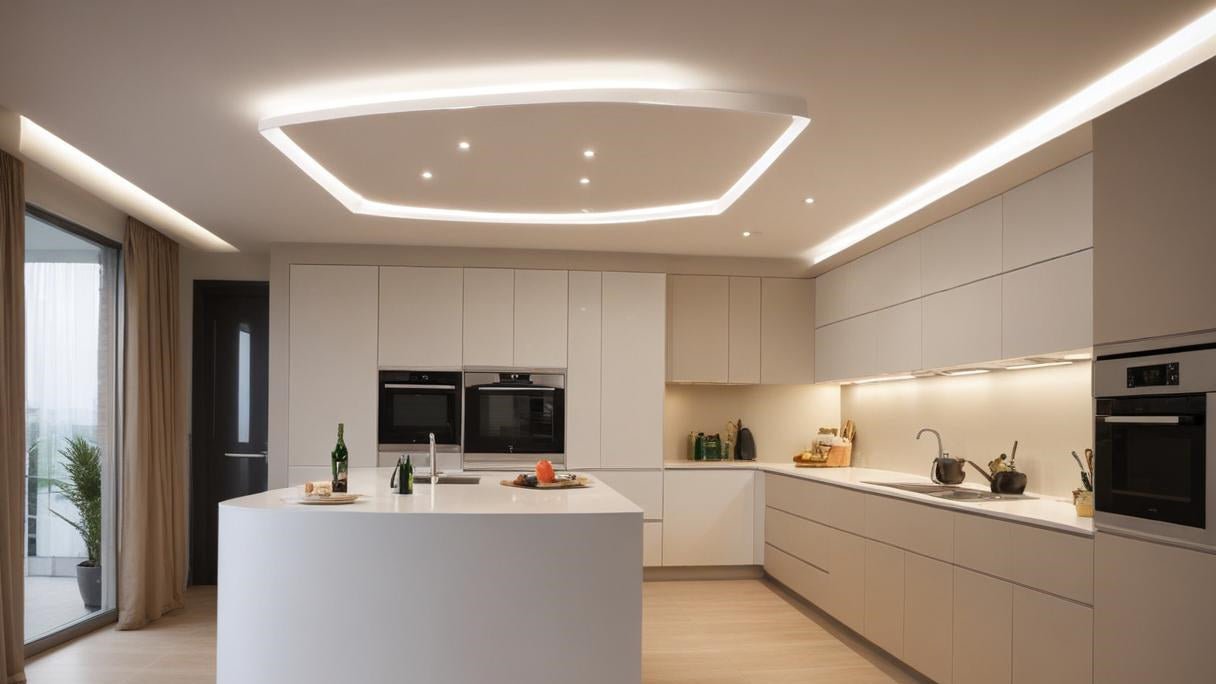With the growing popularity of LED ceiling lights, concerns about their safety, particularly regarding their impact on eye health, have come to the forefront. LED (Light Emitting Diode) technology is known for its energy efficiency, longevity, and versatility. However, questions remain: Are LEDs safe for eyes? This article delves into the potential risks and benefits of LED ceiling lights, providing a balanced view to help you make an informed decision.
Understanding LED Technology
LED ceiling lights produce light by passing a current through a semiconductor. This process is highly efficient and produces very little heat compared to traditional incandescent bulbs. LEDs are also known for their bright, crisp light and the ability to produce various colors and color temperatures, making them a popular choice for residential and commercial lighting.
Potential Risks of LED Ceiling Lights
Blue Light Exposure
One of the primary concerns regarding LED ceiling lights is their emission of blue light. Blue light is a high-energy visible (HEV) light with shorter wavelengths and higher energy levels. While blue light is present in natural sunlight and essential for regulating our circadian rhythms, excessive exposure can be harmful.
- Eye Strain and Discomfort: Prolonged exposure to blue light from LED ceiling lights can cause eye strain and discomfort. This is particularly relevant in environments where people spend long hours under artificial lighting, such as offices and schools.
- Potential Retinal Damage: Some studies suggest that high levels of blue light exposure may contribute to retinal damage and increase the risk of macular degeneration over time. However, the level of exposure from typical LED ceiling lights in homes and offices is generally much lower than the levels used in these studies.
Glare and Flicker
Improperly designed or installed LED ceiling lights can cause glare and flicker, both of which can affect eye comfort and health.
- Glare: Intense or poorly diffused LED light can create glare, making it difficult to see clearly and leading to eye strain.
- Flicker: Some LED ceiling lights can produce flicker, which might not be perceptible to the naked eye but can cause headaches, fatigue, and eye strain for sensitive individuals. Modern, high-quality LED lights usually have flicker-free technology to mitigate this issue.

Advantages of LED Ceiling Lights for Eye Health
Despite these concerns, LED ceiling lights also offer several benefits that can contribute to eye health when used correctly.
Consistent and Adjustable Lighting
- Dimmability: Many LED ceiling lights are dimmable, allowing users to adjust the brightness according to their needs and preferences. Proper lighting levels can reduce eye strain and improve comfort.
- Color Temperature Options: LED ceiling lights are available in various color temperatures, from warm white to cool white. Choosing the appropriate color temperature for different settings can enhance visual comfort. For instance, warm white lights (2700K-3000K) are more relaxing and suitable for living spaces, while cool white lights (4000K-5000K) are better for task-oriented areas like kitchens and workspaces.
Reduced UV and IR Emissions
LED ceiling lights emit negligible amounts of ultraviolet (UV) and infrared (IR) radiation, which can be harmful to the eyes and skin. Traditional incandescent and fluorescent bulbs, on the other hand, can emit higher levels of UV and IR radiation. This makes LED ceiling lights a safer option for prolonged exposure.
High-Quality Light
High-quality LED ceiling lights provide uniform and stable illumination, reducing the risk of eye strain and discomfort. They offer excellent color rendering, ensuring that colors appear natural and vibrant, which can be particularly important for tasks that require good visual accuracy.
Best Practices for Using LED Ceiling Lights Safely
To ensure that LED ceiling lights are used safely and effectively, consider the following tips:
- Choose High-Quality Products: Invest in LED ceiling lights from reputable manufacturers to ensure good design, reduced flicker, and appropriate color temperature options.
- Use Appropriate Brightness Levels: Adjust the brightness of LED ceiling lights to suit different activities and times of day. Avoid overly bright lighting, especially in the evening, to minimize eye strain.
- Consider Diffusers and Shades: Use diffusers and shades to soften the light from LED ceiling lights and reduce glare.
- Take Breaks: If you spend long hours under artificial lighting, take regular breaks to rest your eyes. Follow the 20-20-20 rule: every 20 minutes, look at something 20 feet away for at least 20 seconds.
Conclusion
In conclusion, LED ceiling lights are generally safe for eyes when used appropriately. While there are potential risks associated with blue light exposure, glare, and flicker, these can be mitigated by choosing high-quality products and using them correctly. The benefits of LED ceiling lights, such as energy efficiency, adjustable brightness, and reduced UV and IR emissions, make them a favorable choice for modern lighting needs. By following best practices, you can enjoy the advantages of LED ceiling lights while minimizing any potential risks to eye health.


































Leave a comment
This site is protected by hCaptcha and the hCaptcha Privacy Policy and Terms of Service apply.